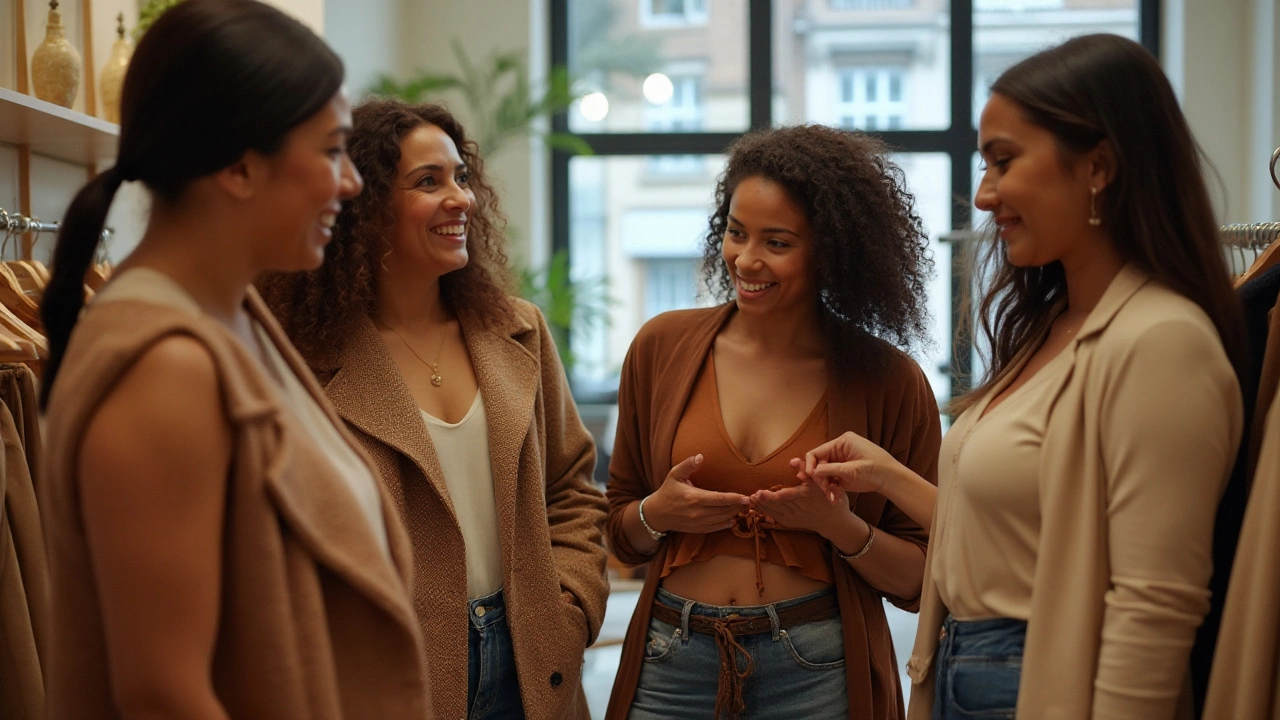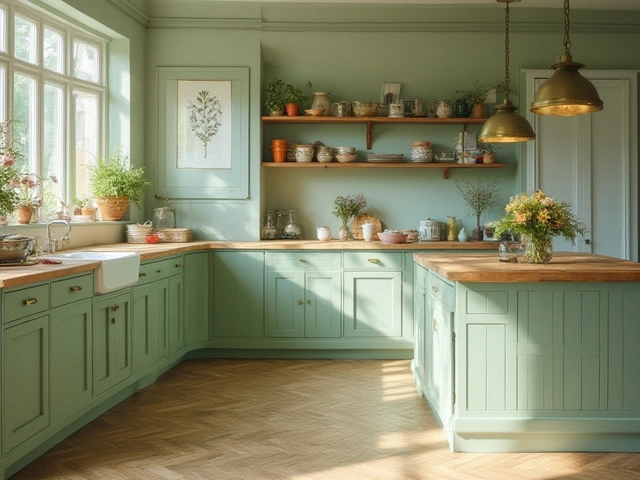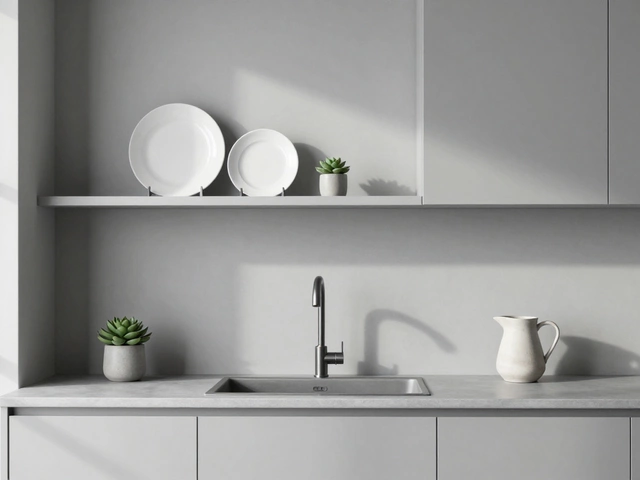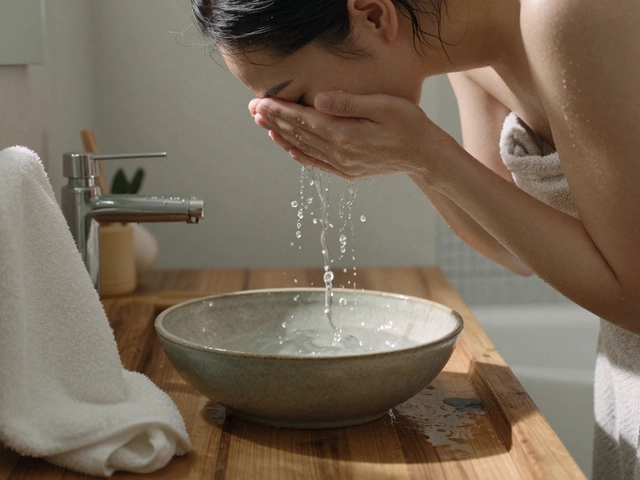When it comes to fashion, the way clothes make you feel is just as important as how they make you look. Selecting garments that complement your body shape, personality, and lifestyle can work wonders for your confidence. But how do you know which clothes truly suit you?
Instead of following fleeting trends, understanding your unique attributes can be a revolution in self-expression. Identifying your body shape is a great starting point; it helps guide you to choices that enhance your natural silhouette. Matching colors with your skin's undertones and picking fabrics that feel comfortable yet sophisticated can be transformative too.
Personal style isn't about dressing like everyone else, but about curating pieces that tell your story. Let's dive into what makes your wardrobe distinctly yours, with tips and insights directly from the heart of the fashion world.
- Understanding Your Body Shape
- Colors that Complement
- Fabrics and Textures
- Defining Your Personal Style
Understanding Your Body Shape
Recognizing your body shape is an empowering step in mastering your wardrobe. When we think about fashion, it's easy to get swept up in trends without considering how they align with our unique physiques. Knowing your body shape can direct your shopping decisions, ensuring you pick garments that flatter your silhouette while boosting your confidence. There are several common body shapes: hourglass, pear, apple, rectangle, and inverted triangle, each with distinct characteristics that benefit from certain styling techniques. The key is not to force yourself into fitting a particular mold, but rather to embrace your natural shape and accentuate it. This understanding fosters confidence and allows you to create a personal style that feels both comfortable and stylish.
An hourglass figure, for instance, boasts balanced proportions with a defined waist, ideal for styles that highlight the midsection. Pear shapes, characterized by wider hips and narrower shoulders, often find A-line skirts and embellished tops to be quite flattering. On the other hand, apple shapes, with fuller midsections, may prefer empire waistlines and flowy tunics for a balanced look. Rectangle body types, with their uniform proportions, can comfortably carry belts and structured pieces to add curves. Lastly, for those with inverted triangle shapes, concentrating on enhancing the lower half with bright colors or patterns can create a stunning effect.
Stacy London, a renowned fashion consultant, once said, 'It's not about size; it's about shape.' This resonates because focusing on body shape rather than size means we celebrate diversity.
To truly harness the power of this knowledge, many experts recommend taking measurements to confirm your body shape. A completely straightforward way to measure is by noting the circumference of your shoulders, bust, waist, and hips. Comparing these measurements can provide clarity on your shape category. For example, if your hip measurement is significantly greater than your bust, you likely have a pear shape; if your measurements are even, you may be more rectangle. Embracing these natural dimensions isn't about confinement but liberation; it allows you to ignore the fashion 'don'ts' and explore the 'dos' that enhance your particular silhouette. Curating a wardrobe based on these principles not only enhances your fashion choices but also your day-to-day style confidence.
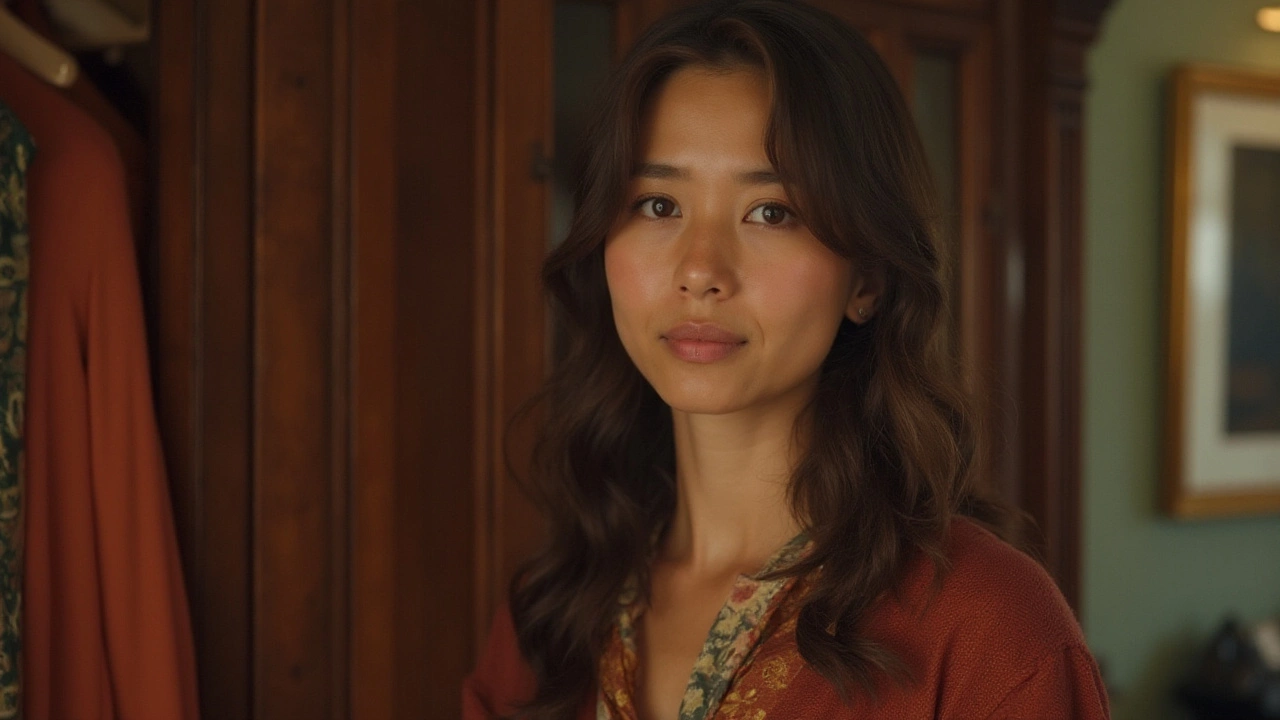
Colors that Complement
Choosing the right colors can make a significant difference in how your outfit looks and feels, not to mention how it complements your natural features. Each individual has unique undertones in their skin which play a crucial part in determining the colors that suit them best. Some people may have warm undertones, which pair well with earthy colors like golden yellows, rich browns, and deep reds, while others might have cool undertones that harmonize beautifully with blues, purples, and soft pinks. Identifying these undertones is a fundamental step to find hues that truly make you radiate.
A simple yet effective method to identify your skin's undertone is to take a close look at your veins. If they appear more greenish, it often suggests a warm undertone. In contrast, bluish or purplish veins indicate cooler undertones. The jewelry trick is another method: those with warm undertones usually find that gold jewelry enhances their complexion, while cool undertones glow in silver. Once you've pinpointed your undertones, you can start incorporating matching colors into your wardrobe. This way, you make the most of your natural palette and ensure every shade you wear complements you precisely.
The Power of Contrast and Balance
Complementing colors also involves understanding the principle of contrast. For instance, if you have dark hair and eyes with contrasting fair skin, wearing lighter, vibrant colors can bring out your eye color, creating a striking effect. On the other hand, a less contrasting appearance, such as light hair and eyes combined with fair skin, benefits from softer colors. These colors will not overwhelm your features but will blend smoothly, adding elegance to your fashion sense.It can be fascinating to note that color psychology plays a role in personal expression too. According to a study by Eiseman, "Colors can convey messages, evoke moods, and even influence our perceptions." Wearing colors like green represent tranquility and confidence, while blue encourages calmness and trust. This insight can become a versatile tool in dressing for various occasions, whether for professional environments or social gatherings, allowing you to send the right messages.
To keep track of what works, consider creating a color mood board or using photo apps to visualize how different shades look on you. This method can be particularly useful when choosing pieces for a capsule wardrobe, ensuring every item is versatile and flattering. Coordinating outfits becomes more achievable when you recognize the colors that support your best attributes. Remember, your choice of color isn't solely about trends; it's about aligning with what makes you feel your best version.

Fabrics and Textures
When choosing the perfect wardrobe, the right fabrics and textures play a crucial role in determining both comfort and style. They can define your outfit's look and feel, giving it an edge that aligns with your personal style. Fabrics like cotton and linen are lightweight and breathable, making them ideal choices for warmer months or more relaxed occasions. On the other hand, materials like wool and cashmere offer warmth and a sense of luxury, suitable for colder climates and formal settings. Understanding the qualities of different fabrics can help you make informed choices that fit the seasonal and personal comfort requirements.
Textures bring an additional layer of depth to your clothing choices. For instance, the crisp feel of a starched cotton blouse echoes professionalism and elegance, while the softness of a silk dress whispers sophistication and grace. Incorporating varied textures into your wardrobe can provide interesting contrast and dimension, making each outfit unique and engaging. Additionally, the tactile quality of textures can invoke emotional responses, offering both the wearer and the observer a fuller fashion experience. Embracing an assortment of textures can thus transform a basic wardrobe into a versatile, story-telling ensemble.
It's also vital to acknowledge the practical aspect of fabric selection. Some materials might require more care and maintenance, influencing your purchasing decisions. Synthetic fibers like polyester are known for their durability and ease of care, often seen in everyday wear due to their resistance to wrinkles and shrinking. On the other hand, more delicate fabrics such as silk or satin can be prone to wear and require dry cleaning, impacting lifetime and cost considerations. These practical aspects should factor into your fabric decisions, aligning with your lifestyle and wardrobe management preferences.
Fashion experts often talk about the 'fabric feel' as essential for a satisfying wardrobe experience. The legendary designer Coco Chanel once said, "Fashion changes, but style endures," hinting at the timeless impact of choosing the right materials that resonate with personal style rather than passing trends. Perhaps, reflecting on the experience different fabrics bring can help you build a wardrobe that marries elegance with endurance, ensuring each piece feels like an extension of yourself. This sentiment resonates with every fashion-conscious individual aiming for a personal yet versatile collection.
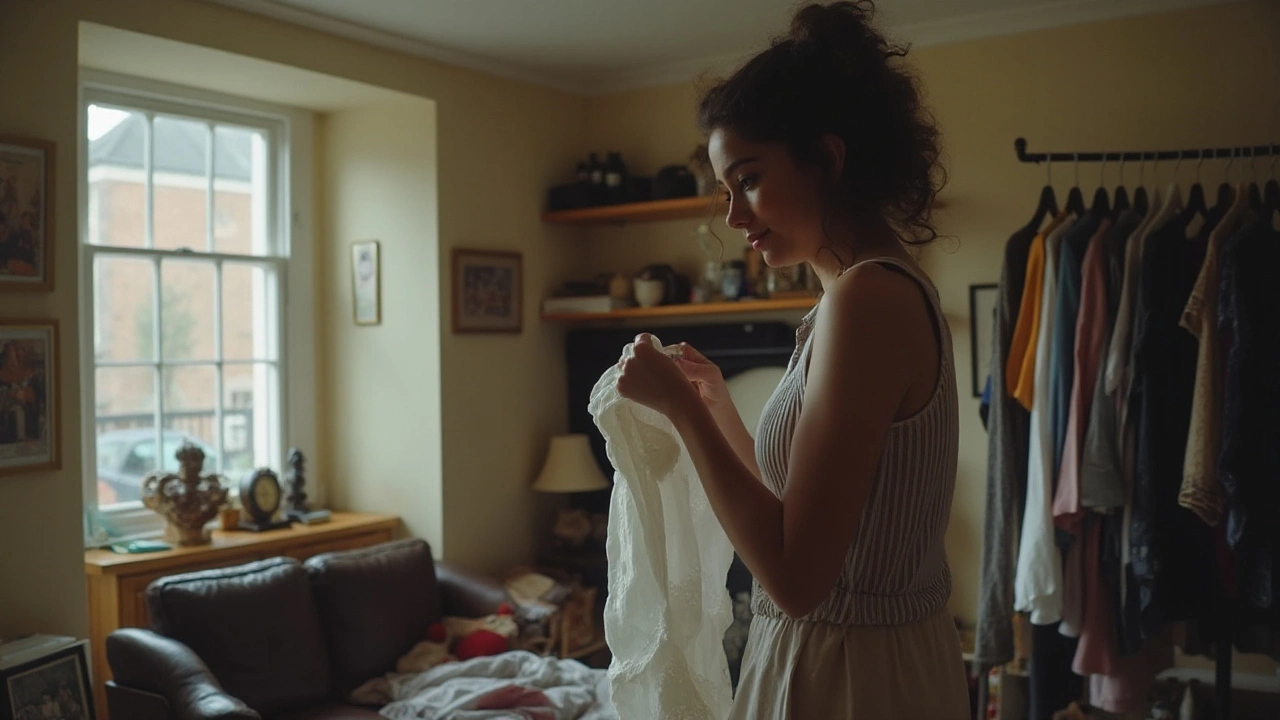
Defining Your Personal Style
Defining your personal style is akin to embarking on a delightful journey of self-discovery. It's an amalgamation of all that you are—your passions, influences, and the story you wish to tell through clothes. To many, fashion might seem ephemeral, but personal style has the power to offer a sense of enduring identity. Unlocking this unique style requires patience, experimentation, and self-awareness. Delve deep into what resonates with you emotionally and aesthetically. Reflect on colors and textures that make you feel at home in your skin. Take into account the silhouettes and fabrics that excite you and make you move with confidence.
Begin by considering your lifestyle and daily activities, as practicality should never be sidelined. Observe iconic figures and draw inspiration without the need for mimicry. Create a vision board or a digital album with styles, outfits, and colors that speak to you. This is where texture comes into the limelight; a tactile connection with fabrics such as cotton, silk, or wool is imperative. Brands often channel profound stories through their collections. As famed designer, Giorgio Armani, once said,
“The essence of style is a simple way of saying something complex.”Through experimentation, allow yourself to gravitate towards signature elements that become your wardrobe staples—be it vibrant scarves, contemporary shoes, or vintage accessories.
A well-curated wardrobe often includes a blend of the effortlessly classic and the distinctly modern, enabling quick transitions from professional settings to relaxed gatherings. Document your outfit ensembles and note down the mood each outfit evokes. For someone with a penchant for detail, the tactile, visual, and even emotional aspects of fashion can inspire new combinations. Additionally, it is beneficial to understand sartorial elements like construction, fit, and material as they directly influence aesthetics. Create a harmonious balance between neutral and dynamic hues to ensure that the entire garment ensemble presents a coherent narrative.
To solidify your distinct fashion identity, delve into color theory and use those principles as guiding stars. Below is a simple representation of how colors might affect perception:
| Color | Perception |
|---|---|
| Blue | Calm, Trustworthy |
| Red | Bold, Energetic |
| Green | Natural, Harmonious |
| Yellow | Cheerful, Warm |
One's personal style is a dynamic entity. Over time, it evolves, reflecting the nuances of life and growth. Stay true to what captures your spirit, while keeping an open heart to the thrills of fashion’s vicissitudes. Remember, it's a living canvas where art and identity, past and future, meet. Assert your fashion choices fearlessly—it is in the act of truly embracing uniqueness that one's style story unfurls into its purest form.

